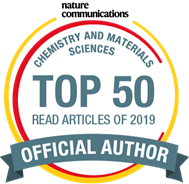When the metal active center is dispersed to the single-atom scale, thanks to the boosted surface free energy, unsaturated coordination environment and the interaction of the metal-support will give the single-atom catalyst novel properties. The atomically dispersed active center not only significantly improves the utilization efficiency of metal atoms, but also changes the energy and selectivity of the adsorption and desorption of reaction molecules on the catalytic center. In traditional single-atom catalysts, it is difficult to avoid the re-aggregation of metal atoms. What's more important, the ambiguous relationship of the interaction between the metal atom and support remarkably limited the improvement of catalytic performance.

Schematic diagram of the fabrication process for SA Co-D 1T MoS2
Here, for the first time, Prof. Xiaoqiang Cui’s research team has reported a new strategy (assembly/leaching) for the preparation of single-atom catalyst. By applying the strong chemical interaction between two counterpart 2D materials, cobalt nanodisks were successfully assembled onto the surface of molybdenum disulfide nanosheets, following by the leaching process with acid to obtain the high loading metal cobalt single-atom array on distorted metal phase molybdenum disulfide (SA Co-D 1T MoS2).
SA Co-D 1T MoS2 exhibits outstanding hydrogen evolution reaction activity (as good as commercial Pt) and excellent long-term stability. The active site block experiment reveals that the single-atom Co is the principal catalytic center, although both single Co atom and 2H to D-1T phase transformation of MoS2 are also contributory to HER catalysis. DFT calculations further confirmed that the high HER activity of this single-atom catalyst is mainly owing to an ensemble effect via the synergy of Co adatom and S of the MoS2 support by tuning hydrogen-bonding mode at the interface of the catalyst. The discovery of this SA Co-D 1T MoS2 catalyst highlights the area of tuning the structure and functionality of metal-TMD catalysts at the atomic scale, which holds great promise for applications in large scale water splitting electrolyzers.
This work cannot be done without the valuable collaborative efforts from Prof. Weitao Zheng (Jilin University), Prof. Shaojun Guo (Peking University), Prof. Lin Gu (Institute of Physics, CAS), Dr. Jingyuan Ma (Shanghai Institute of Applied Physics, CAS), Prof. Lirong Zheng (Institute of High Energy Physics, CAS), Prof. Wei Zhang (Jilin University) and Prof. Ping Liu (Brookhaven National Laboratory).

The research was selected as Top 50 Chemistry and Materials Sciences Articles for Nature Communications published in 2019
Link for the paper: https://www.nature.com/articles/s41467-019-12997-7
Qi. K. et al. Single-atom cobalt array bound to distorted 1T MoS2 with ensemble effect for hydrogen evolution catalysis. Nature Communications. 10, 5231 (2019).